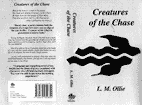 |
|
| Home Page • Creatures • King Richard III • Author's Page • Where to Buy • Contact | |
Quick Links:On The Trail of King Richard III. The book that started it all. The Virtual tour of Medieval England based on the book. The Visitor Centre - Facts and Information about Medieval life and times. King Richard IIIWhat are these hands doing? Find out more by clicking here. Creatures of the Chase:
By the same author, a tragic love story and edge of your seat thriller. Visit our store for more information about "Creatures". |
Historical PlacesSheriff Hutton - Richard III's 'stronghold of strongholds' north of York lies in ruins on private land so it's necessary to get permission first if you wish to visit the site. The Parish Church of St. Helen and the Holy Cross is some distance from the castle. The guidebook makes reference to the monuments in the Chapel of St. Nicholas and specifically mentions Edward, Prince of Wales, son of King Richard III. It goes on to say that 'there is some uncertainly about the arrangements for his burial here.' In fact there is absolutely no proof that the boy is buried in Sheriff Hutton or that the badly damaged alabaster monument is even his. Edward died in Middleham so it's more likely that he was buried there, especially since it took his father several days to arrive from Nottingham after learning of his son's death.The Parish Church of St. James the Greater, Dadlington has, in many respects, played a more significant role in the story of the Battle of Bosworth than Sutton Cheney. There has been a church on this site since before the Norman Conquest although the earliest traces left for us to see today are most certainly late 12th or early 13th century. The present church stands on a low hill at the northwestern corner of a spacious village green. The cemetery with surrounds it is extensive. Many of the early tombstones are made of Swithland slate, the lettering finely cut. Contemporary research * suggests that the focus of the battle was in an area of meadow and marshland in a place called Sandford. It was here that King Richard’s horse floundered in the marsh adjacent to the Fenn Lanes in the direction of Shenton. What is known is that the bodies of those slain in the battle were brought to St. James and buried in communal pits some within the churchyard and others elsewhere in the neighbourhood. In 1886, the Leicester Chronicle reported that ‘skeletons and broken fragments of rusty armour still frequently obstruct the peasant’s plough, and the old churchyard has known many ghastly reinterments of the poor soldiers’ remains.’ In 1511, Henry VIII authorized a license for the churchwardens of Dadlington to ask for alms in several dioceses towards the chapel of St. James, ‘standing upon a parcell of the grounde where Bosworth Feld otherwise called Dadlyngton Feld in our county of Leicester was done …’ Land was purchased to provide an income for a priest to say Masses for those who died on the battlefield. This continued until the suppression of the chantries during the brief reign of Edward VI. Happily, on or near the anniversary of the battle, a special commemorative service is held and prayers are offered for the souls of all those slain on the day. * P.J. Foss, The Field of Redemore (1990) and A Church for Bosworth Field (1987) Crosby House, or rather Crosby Hall still exists. Built in 1466 it originally stood in Bishopgate and was both the family residence and business premises of Sir John Crosby. While in London, Richard, Duke of Gloucester rented the house when not in official residence at the ancestral home, Barnard Castle. When the area was redeveloped in the early 1900's Crosby Hall was dismantled and reassembled at its new location in Chelsea. The hall is 69 feet long, the spectacular ceiling painted in dazzling hues of red and gold. There is also a delightful oriel window which rises the full height of the building. Currently in private hands. The Battle of Agincourt (25 October 1415) could truly be called a statistical anomaly. The English forces were outnumber 10-1 yet at the end of the day three French dukes lay dead along with the constable of France, nine counts, 90 lords and approximately 5,000 lesser nobles. On the English side, one royal duke (Edward, 2nd Duke of York), one earl, seven knights and around 500 others. Tragically the Duke of York suffocated in his armour. The Battle of Towton (Palm Sunday, 1461) The 'longest, biggest and bloodiest battle ever fought on British soil' Visit it on The Virtual Tour When Queen Victoria's husband Prince Albert died at the age of forty-two a royal mausoleum was built at Frogmore, in the Home Park near Windsor Castle. Queen Victoria, the last of the House of Hanover lies buried there beside her beloved Albert in a giant sarcophagus surmounted by their effigies. Nearby is a smaller mausoleum containing the remains of Victoria's mother, the Duchess of Kent, while the grounds surrounding this royal mausoleum have been laid out as a burial ground intended for Victoria's descendants. This area is part of the royal grounds and is open to the public only twice a year, in May. The Duke & Duchess of Windsor are buried there. Saint George's Chapel (Windor) houses at least one member of each of the later royal houses: Henry VI (Lancaster - Plantagenet); Edward IV (York - Plantagenet); Henry VIII (Tudor); Charles I (Stuart); George III/George IV/William IV (Hanover); Edward VII (Wettin); George V/George VI (Windsor)
|
| Taheke Press © 2006-2019 |
Home •
Creatures •
King Richard III •
Authors Page •
Where to Buy •
Contact • Graphic Design by Taheke Press |


